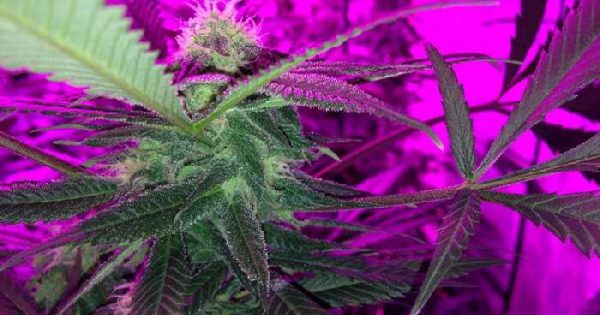Best Spectrum – LED grow lights for medical plants

There are many variations of LED indoor grow lights. Some are made with 2 bands of light, some with 6, 12 15 and more. What does this mean and which one is best? The benefit of growing with LED grow lights is being able to use diodes to target specific wavelengths of light needed for photosynthesis and eliminating extra wavelengths to get the most efficient growing system.
HID lights, on the other hand, give off white light which encompasses all the color of the light spectrum. Hence HID lighting gives of excess heat and wastes energy by using a higher wattage. The best configuration for medical photosynthesis is a grow light with 6-8 bands of light.
Best Spectrum – LED grow lights for medical plants
PAR peaks and highest yields
PAR peaks can be seen on a photosynthetic action radiation chart. Primary peaks are at 630nm (red) and 480nm (blue) and a secondary peak is at 580nm (orange). To cover these peak colors the area around them it is necessary to have at least 6 wavelengths. Adding a couple more wavelengths to balance the spectrum will give the perfect wavelength ratio for indoor growing light.
Any more bands will be excessive and result in a less efficient grow light with a lower yield per watt. If more wavelengths were better, why not grow with a 15-band, 20-band or a 30 band light or more? What about an all-band light which has white diodes and encompassed all the colors of the visible spectrum? Excessive bands of light are counterproductive when it comes to indoor growing.
Having excessive band of light in the grow light defeats the intended purpose of growing with diodes to target only the wavelengths needed. Therefore it is best to include only what is needed and nothing extra. The highest yielding lights will have between 6 to 8 bands of light in the correct weighted average ratios per band.
Best Formulation of Wavelengths of Light
Research has shown that approximately 60% of the light should be centered around the red wavelengths which make up the primary peak necessary for photosynthesis. The secondary peak around the blue/violet wavelength should make up around 20% of the light.
The final 10% should be allocated to tertiary peak colors and some extra diodes to round our ant balance the entire spectra. Grow lights that are configured with this method will not only provide your plants with the ideal balance of light needed for robust growth but will have the highest yield per watt and highest yield per wattage of electrical consumption.
Led Lighting